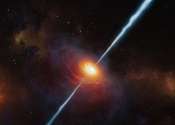Astronomers inspect supernova remnants with MeerKAT
Using the MeerKAT radio telescope, astronomers from the National Radio Astronomy Observatory (NRAO) in Charlottesville, Virginia, and elsewhere have investigated a batch of 36 high latitude supernova remnants. Results of ...









